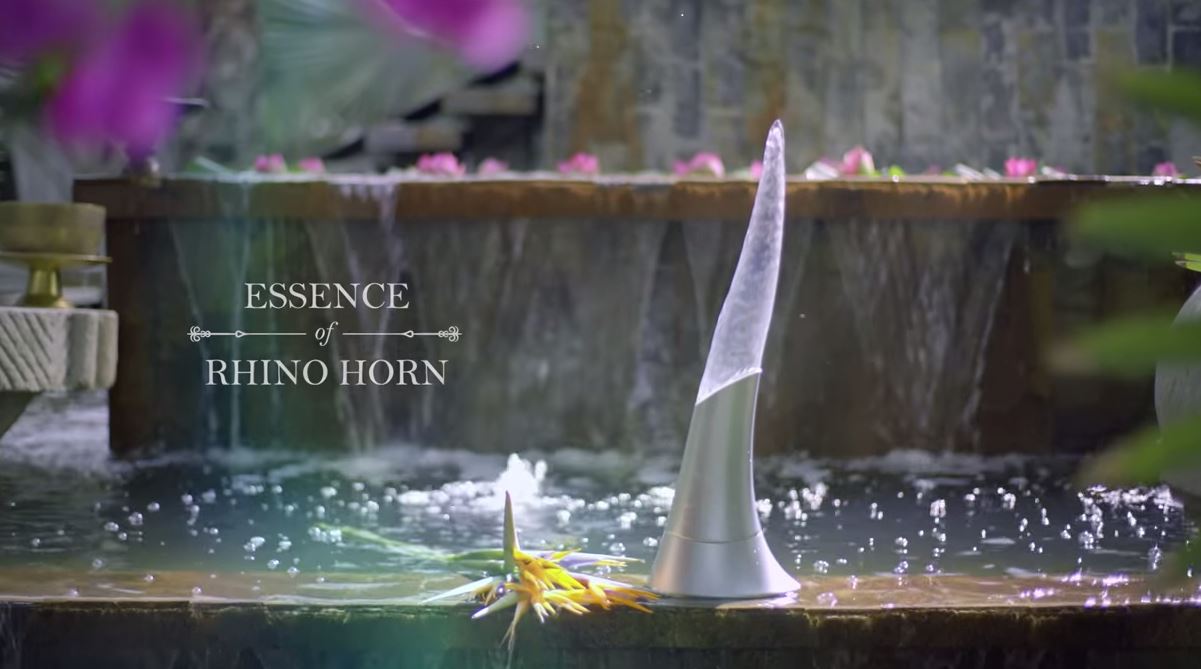
“Sales tricks are what you use to sell something to someone who doesn’t even know they want it.” The Salesman’s Mantra! As we discussed in a Blog from March 2015, Conservation vs. Wildlife Traffickers. Who do you think will win the war in wildlife crime?!, wildlife traffickers can increasingly be described as ‘market savvy, intuitive, ruthless, nimble entrepreneurs’.
They have realised how comparably safe it is to get rich from dealing in wildlife. As a result they are now moving beyond simply exploiting the existing demand for high-value animal products such as rhino horn and ivory. Given how easy and lucrative it is to fill the demand for animal products compared to their other ‘businesses’, such as human, arms and drug trafficking, they are likely to be designing and manufacturing new markets.
We know that some people see wildlife as a commodity, nothing more than something to turn into money. Whilst Breaking The Brand’s focus is, and will remain, the demand side of the rhino poaching crisis, we must acknowledge that the demand and the desire to supply can’t be decoupled. Simply put, while there are people who want to sell rhino horn, demand will be manufactured. It isn’t difficult to develop a marketing and sales strategy to persuade users to buy a product that they haven’t thought of, don’t need and don’t currently want; business has been doing it for decades. For example, no industry has mastered this as well as the beauty industry!
So it is interesting that the first advert to sell synthetic rhino horn, which is a legal product, is targeted at women. Breaking the Brand can honestly say that since 2013 when we first started interviewing the users of genuine rhino horn (our target market isn’t the people using fake rhino horn) on no occasion has rhino horn as a skin cream played a role in these conversations. The wealthy elite discussed what they used rhino horn for and this type of beauty treatment was never mentioned. So from BTBs perspective it is very disconcerting that the developers of synthetic horn may be creating a NEW market for rhino horn with their very first product.
One thing that is very apparent from time spent in Asia, including Viet Nam, is that women are very sensitive about their skin.
This was brought home recently given something that happened to one of BTBs conservation colleagues. As many of our followers know we are big supporters of Trang Nguyen, Founder of WildAct Vietnam who recently wrote a guest blog for BTB.

Trang is a passionate, tenacious and stunningly lovely young woman, who because of the nature of her work spends a lot of time outdoors. When challenged about her tanned skin via her Facebook page “If you don’t take care of your skin n keep it pale you will never able to find a husband” we loved the bolshiness and feistiness of Trang’s response which I have snipped from her Facebook page! (You go girl).
I give this example to show the importance aspirational women place on the ‘status’ they feel their skin and beauty gives them. This gullible and anxious group is easy to sell a product to that they didn’t even know they want. As I mentioned earlier, the beauty industry has been doing this for decades worldwide; it is a well-tested formula that works, especially for luxury products.
The people in South Africa who want to sell farmed rhino horn aren’t at the stage of creating new markets and new demand, yet. Though much is being done to ensure current demand doesn’t drop; we have heard that representatives of the pro-trade groups have been regularly visiting Viet Nam.
First they need a channel to sell a legal ‘product’. They are certainly putting a lot of effort into this first step, given that they are lobbying for either:
- A legalisation of international trade, or
- Overturning the domestic trade ban in SA, or
- A one-off sale of their stockpile
If they achieve any of these as their first step, it won’t take long to work out a sales pitch. Maybe the ‘synthetic’ rhino horn advert has provided them with some ideas already!?
Make no mistake, the moment the door is opened to any kind of trade in rhino horn all ‘producers’ will make sure that demand grows.
We have seen the creeping opening of markets many times before and we should all be attuned to the ‘foot in the door’ to ‘open the floodgates’ approach to commercialising any type of ‘natural commodity’.
So how do we stop this from happening yet again in the case of rhino horn? There is really only one option – quash the existing demand in Viet Nam through demand reduction measures, close down any opportunities to sell horn legally domestically in South Africa or internationally and burn the rhino horn stockpile managed by the South African government on behalf of its citizens.
We don’t have to look far to see plenty of examples highlighting that leaving something to the ‘market’ to be solved has not worked and is easily misappropriated for personal gain. Similarly, we can’t look to technology to fix all our problems. It will be ethics, integrity and humanity that solve these issues; standing up and challenging people and governments to do the right thing and making that challenge non-negotiable. In line with this it is exciting to see in recent days the fledgling challenges to the South African government to burn the stockpile of rhino horn #SABurnTheHorn. Now is the right time for the fatigued to re-engage and the apathetic to decide to take action.
Breaking The Brand’s third campaign in Viet Nam will be launched in the next couple of months. After the first two, which focused on ‘health anxiety’ informing users of the risk of consuming poisoned rhino horn, this next campaign focuses on ‘status anxiety’. Reducing the desire to consume is only half of the equation. Sending a clear message that the commercialisation of this beautiful creature is NOT AN OPTION that the South African people will accept and to make sure that the SA government doesn’t let this become another Eskom debacle is also necessary. A big step to achieve this is to #SABurnTheHorn. Good luck.
These are the views of writer: Dr. Lynn Johnson, Founder, Breaking the Brand

